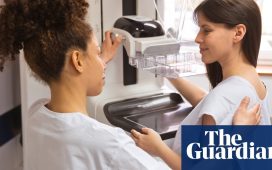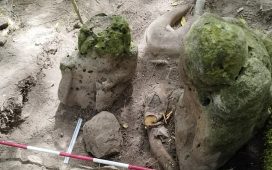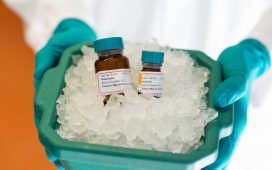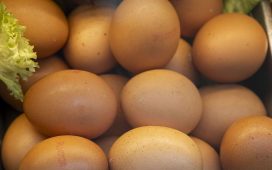
SPACELINE Current Awareness Lists are distributed via listserv and are available on the NASA Task Book website at https://taskbook.nasaprs.com/Publication/spaceline.cfm.
Please send any correspondence to Shawna Byrd, SPACELINE Current Awareness Senior Editor, [email protected].
Call for articles to cite in the weekly lists: Authors at NASA Centers and NASA PIs—do you have an article that has recently published or will publish in the upcoming weeks within a peer-reviewed journal and is in the scope of space life sciences? If so, send it our way! Send your article to the email address mentioned above. Articles received by Wednesday will appear within that week’s list—articles received after Wednesday will appear the following week.
Papers deriving from NASA support:
1
Gibson CR, Mader TH, Lipsky W, Brown DM, Jennings R, Law J, Sargsyan A, Brunstetter T, Danilichev SN, Maezawa Y.
Implantable collamer lens use in a spaceflight participant during short duration spaceflight.
Aerosp Med Hum Perform. 2023 Jan;94(1):48-50.
https://doi.org/10.3357/AMHP.6150.2023
Note: ISS results. From the abstract: “The purpose of this report is to document the first use of a single piece, posterior chamber phakic implantable collamer lens (ICL) with a central port in the right eye (OD) of a spaceflight participant (SFP) during a 12-d Soyuz mission to the International Space Station (ISS). We also briefly document the stability of a pre-existing pachychoroid pigment epitheliopathy (PPE) in the macula of his left eye (OS) during this mission.”
Journal Impact Factor: 0.889
Funding: C.R. Gibson, A. Sargsyan, and T. Brunstetter are affiliated with NASA Johnson Space Center.
2
Waisberg E, Ong J, Paladugu P, Kamran SA, Zaman N, Lee AG, Tavakkoli A.
Dynamic visual acuity as a biometric for astronaut performance and safety.
Life Sci Space Res. 2023 Jan 13. Online ahead of print.
https://doi.org/10.1016/j.lssr.2023.01.002
PI: A. Tavakkoli
Note: From the abstract: “Astronauts are exposed to an austere and constantly changing environment during space travel. To respond to these rapid environmental changes, high levels of dynamic visual acuity (DVA) are required. DVA is the ability to visualize objects that are in motion, or with head movement and has previously been shown to decrease significantly following spaceflight. Decreased DVA can potentially impact astronauts while performing mission critical tasks and drive space motion sickness. In this paper, we suggest that DVA assessment during spaceflight and during G-transitions should be considered to help further understand the vestibulo-ocular impacts of interplanetary spaceflight and ensure mission performance including potential manned missions to Mars.”
Journal Impact Factor: 4.1
Funding: “NASA Grant [80NSSC20K183]: A Non-intrusive Ocular Monitoring Framework to 32 Model Ocular Structure and Functional Changes due to Long-term Spaceflight.”
3
Williams ES, Ryder VE.
Spaceflight maximum allowable concentrations for ethyl acetate.
Aerosp Med Hum Perform. 2023 Jan;94(1):25-33.
https://doi.org/10.3357/AMHP.6057.2023
Note: From the abstract: “Ethyl acetate is a simple organic compound that occurs naturally and is used industrially as a solvent. It has been detected in the ISS atmosphere and is known to off-gas from building materials. As NASA astronauts have been and will be exposed to ethyl acetate during space missions, Spaceflight Maximum Allowable Concentrations (SMACs) were developed following an extensive review of the available literature.”
Journal Impact Factor: 0.889
Funding: E.S. Williams and V.E. Ryder are affiliated with NASA Johnson Space Center.
4
Alaghband Y, Klein PM, Kramár EA, Cranston MN, Perry BC, Shelerud LM, Kane AE, Doan NL, Ru N, Acharya MM, Wood MA, Sinclair DA, Dickstein DL, Soltesz I, Limoli CL, Baulch JE.
Galactic cosmic radiation exposure causes multifaceted neurocognitive impairments.
Cell Mol Life Sci. 2023 Jan 6;80:29.
https://pubmed.ncbi.nlm.nih.gov/36607431
PI: C.L. Limoli/NSCOR
Note: This article may be obtained online without charge.
Journal Impact Factor: 9.207
Funding: “This work was supported by the NASA Specialized Center of Research (NSCOR) Grant NNX15AI22G (CLL, IS, MMA, JEB) and associated grant augmentation (PMK).”
5
Buettmann EG, Yoneda S, Hu P, McKenzie JA, Silva MJ.
Postnatal Osterix but not DMP1 lineage cells significantly contribute to intramembranous ossification in three preclinical models of bone injury.
Front Physiol. 2023 Jan 4;13:1083301.
https://doi.org/10.3389/fphys.2022.1083301
PI: E.G. Buettmann
Note: This article is part of Research Topic “Skeletal Stem/Progenitor Cells and Their Environment in Bone Regeneration” (https://www.frontiersin.org/research-topics/28217/skeletal-stemprogenitor-cells-and-their-environment-in-bone-regeneration#overview). Additional articles will be forthcoming and may be found in the link to the Research Topic. This article may be obtained online without charge.
Journal Impact Factor: 4.755
Funding: “This work was supported by funding from NIAMS (R01 AR050211 and P30 AR057235) and by the Translational Research Institute for Space Health (TRISH) through Cooperative Agreement NNX16AO69A. Histological images were taken with the Nanozoomer at Alafi Neuroimaging Core (NIH Shared Instrumentation Grant #S10 RR027552).”
6
Basner M.
Ultra-short objective alertness assessment: An adaptive duration version of the 3 minute PVT (PVT-BA) accurately tracks changes in psychomotor vigilance induced by sleep restriction.
SLEEP Advances. 2022 Oct 20;3(1):
zpac038.
https://doi.org/10.1093/sleepadvances/zpac038
PI: M. Basner
Note: This article may be obtained online without charge.
Journal Impact Factor: Not available for this journal
Funding: “I thank the subjects participating in the experiments and the faculty and staff who were involved in all aspects of the studies that provided the data for the analyses presented here, specifically Siobhan Banks, Hans van Dongen, Namni Goel as well as David F. Dinges who served as PI on these studies but was not included as a co-author due to the nature of this Festschrift. This investigation was sponsored by the Human Factors Program of the Transportation Security Laboratory, Science and Technology Directorate, U.S. Department of Homeland Security (FAA #04-G-010), by National Institutes of Health grants R01 NR004281 and UL1 RR024134, and in part by the National Space Biomedical Research Institute through NASA NCC 9-58.”
7
Harris KM, Stankovic A, Thoolen S, Strangman G, Caldwell B, Robinson SK.
Team dynamics and collaborative problem-solving for Lunar construction: Lessons from complex construction scenarios on Earth.
Hum Factors. 2023 Jan 6;00187208221148610.
https://pubmed.ncbi.nlm.nih.gov/36607842
PI: A. Stankovic
Note: From the abstract: “This paper surveys the existing literature surrounding problem-solving and team dynamics in complex and unpredictable scenarios, and evaluates the applicability of studying Earth-based construction teams to identify training needs for Lunar construction crews.”
Journal Impact Factor: 3.598
Funding: “This work is supported by NASA Human Research Program Grant Number 80NSSC20K0844.”
___________________________________________________
Other papers of interest:
1
Salavatifar M, Ahmadi SM, Todorov SD, Khosravi-Darani K, Tripathy A.
Impact of microgravity on virulence, antibiotic resistance, and gene expression in beneficial and pathogenic microorganisms.
Mini Rev Med Chem. 2023 Jan 9;23. Mini review.
https://pubmed.ncbi.nlm.nih.gov/36624640
Note: From the abstract: “During space missions, the impact of the space conditions (both microgravity and radiation) on physiologic and metabolic aspects of the microbiota of astronauts’ bodies should be considered. Changes depend on the mission’s duration, types of organisms, and ecology. Reported alterations are related to changes in morphology, growth, gene expression, and physiology of cells, resulting in increased virulence, acid, antibiotic resistance, biofilm formation, secondary metabolism, and microbial mutations. Accordingly, recent research indicates the impacts of simulated microgravity on human physiology and bacterial characteristics. This paper has reviewed the aspects of microgravity on changes in microbiota, including virulence, antibiotic resistance, and gene expression.”
2
Kutz CJ, Kirby IJ, Grover IR, Tanaka HL.
Aviation decompression sickness in aerospace and hyperbaric medicine.
Aerosp Med Hum Perform. 2023 Jan;94(1):11-7.
https://doi.org/10.3357/AMHP.6113.2023
Note: From the abstract: “This retrospective study aimed to review the case series diagnosed as aviation decompression sickness (DCS) in a collaborative effort between aerospace specialists and hyperbaricists to increase appropriate identification and treatment of hypobaric DCS.”
3
Hettrick H, Aviles F.
Microgravity and lymphatics: Why space programs need lymphedema physiology specialists.
Lymphat Res Biol. 2023 Jan 9. Online ahead of print.
https://doi.org/10.1089/lrb.2022.0070
Note: From the abstract: “The resurgence of space travel in the recent years, both through formally trained astronauts on the International Space Station and the civilian space race to send astrocivilians to Low Earth Orbit and beyond, beckons the need to understand the role of the lymphatic system and role of endothelial glycocalyx when subjected to gravitational alterations.”
4
Radstake WE, Gautam K, Miranda S, Vermeesen R, Tabury K, Rehnberg E, Buset J, Janssen A, Leysen L, Neefs M, Verslegers M, Claesen J, van Goethem M-J, Weber U, Fournier C, Parisi A, Brandenburg S, Durante M, Baselet B, Baatout S.
The effects of combined exposure to simulated microgravity, ionizing radiation, and cortisol on the in vitro wound healing process.
Cells. 2023 Jan 7;12(2):246.
https://doi.org/10.3390/cells12020246
Note: A random positioning machine was used in this study. From the abstract: “Here, we describe the development of an in vitro model of the simulated spaceflight environment, which we used to investigate the combined effects of simulated microgravity using the random positioning machine (RPM), ionizing radiation, and stress hormones on the wound-healing capacity of human dermal fibroblasts.” This article was part of Special Issue “New Insights into Microgravity and Space Biology” (https://www.mdpi.com/journal/cells/special_issues/R75D12X7FZ). The Special Issue also includes an article from previous Current Awareness List #1,028 https://doi.org/10.3390/cells11233871. Additional articles will be forthcoming and may be found in the link to the Special Issue. This article may be obtained online without charge.
5
Fu Z, Chen S, Zhu Y, Zhang D, Xie P, Jiao Q, Chi J, Xu S, Xue Y, Lu X, Song X, Cristofanilli M, Gradishar WJ, Kalinsky K, Yin Y, Zhang B, Wan Y.
Proteolytic regulation of CD73 by TRIM21 orchestrates tumor immunogenicity.
Sci Adv. 2023 Jan 6;9(1):eadd6626.
https://pubmed.ncbi.nlm.nih.gov/36608132
Note: This article may be obtained online without charge.
6
McCourt JL, Stearns-Reider KM, Mamsa H, Kannan P, Afsharinia MH, Shu C, Gibbs EM, Shin KM, Kurmangaliyev YZ, Schmitt LR, Hansen KC, Crosbie RH.
Multi-omics analysis of sarcospan overexpression in mdx skeletal muscle reveals compensatory remodeling of cytoskeleton-matrix interactions that promote mechanotransduction pathways.
Skelet Muscle. 2023 Jan 6;13:1.
https://pubmed.ncbi.nlm.nih.gov/36609344
Note: This article may be obtained online without charge.
7
Niu YB, Zhang YH, Sun Y, Song XZ, Li ZH, Xie M, Mei QB, Li YH, Chen Q.
Asperosaponin VI protects against bone loss due to hindlimb unloading in skeletally growing mice through regulating microbial dysbiosis altering the 5-HT pathway.
Calcif Tissue Int. 2023 Jan 3.
https://pubmed.ncbi.nlm.nih.gov/36595050
Note: Hindlimb unloading study.
8
Barcellos-Hoff MH, Gulley JL.Molecular pathways and mechanisms of TGFβ in cancer therapy.
Clin Cancer Res. 2023 Jan 4. Review. Online ahead of print.
https://pubmed.ncbi.nlm.nih.gov/36598437
9
Hearn EL, Byford J, Wolfe C, Agyei C, Hodkinson PD, Pollock RD, Smith TG.
Measuring arterial oxygen saturation using wearable devices under varying conditions.
Aerosp Med Hum Perform. 2023 Jan;94(1):42-7.
https://doi.org/10.3357/AMHP.6078.2023
Note: From the abstract: “Recently developed wearable monitoring devices can provide arterial oxygen saturation (Sp
o2
) measurements, offering potential for use in aerospace operations. Pilots and passengers are already using these technologies, but their performance has not yet been established under conditions experienced in the flight environment such as environmental hypoxia and concurrent body motion.”
10
Tank H, Kennedy G, Pollock R, Hodkinson P, Sheppard-Hickey R-A, Woolford J, Green NDC, Stevenson A.
Cabin pressure altitude effect on acceleration atelectasis after agile flight breathing 60% oxygen.
Aerosp Med Hum Perform. 2023 Jan;94(1):3-10.
https://doi.org/10.3357/AMHP.6123.2023
Note: From the abstract: “A flight trial was conducted to determine whether breathing 60% oxygen during high performance flight maneuvers using contemporary pilot flight equipment induces atelectasis and to explore whether cabin altitude had any influence on the extent of atelectasis identified.”
11
Zhang JY, Anderson AP.
Performance risks during surface extravehicular activity and potential mitigation using multimodal displays.
Aerosp Med Hum Perform. 2023 Jan;94(1):34-41.
https://doi.org/10.3357/AMHP.6066.2023
Note: From the abstract: “Surface extravehicular activity (sEVA) will be a critical component of future human missions to the Moon. sEVA presents novel risks to astronaut crews not associated with microgravity operations due to fundamental differences in task demands, physiology, environment, and operations of working on the lunar surface. Multimodal spacesuit informatics displays have been proposed as a method of mitigating sEVA risk by increasing operator autonomy.”
12
Zheng Y, Lu Y, Jie Y, Zhao Z, Fu S.
Test pilot and airline pilot differences in facing unexpected events.
Aerosp Med Hum Perform. 2023 Jan;94(1):18-24.
https://doi.org/10.3357/AMHP.6157.2023
Note: From the abstract: “Unexpected events in flight might decrease the transparency of the flying process and weaken the pilot’s perception of the current state, or even erode manipulating skills. However, during the flight test of a new or modified aircraft, to verify the boundaries of aircraft aerodynamic performance and handling stability, unexpected events may be encountered that need to be handled by the test pilot. Therefore, studying the differences between test pilots and airline pilots could help improve flight safety.”
13
Sahoo DK, Hegde C, Bhattacharyya MK.
Identification of multiple novel genetic mechanisms that regulate chilling tolerance in Arabidopsis.
Front Plant Sci. 2023 Jan 12;13:1094462.
https://doi.org/10.3389/fpls.2022.1094462
Note: From the introduction: “This study was undertaken to complement the effort of ongoing cold tolerance studies in plants and identify any possible novel genetic cold tolerance mechanisms by conducting genome-wide association study (GWAS) of natural variants and insertion mutant analyses in Arabidopsis.”










